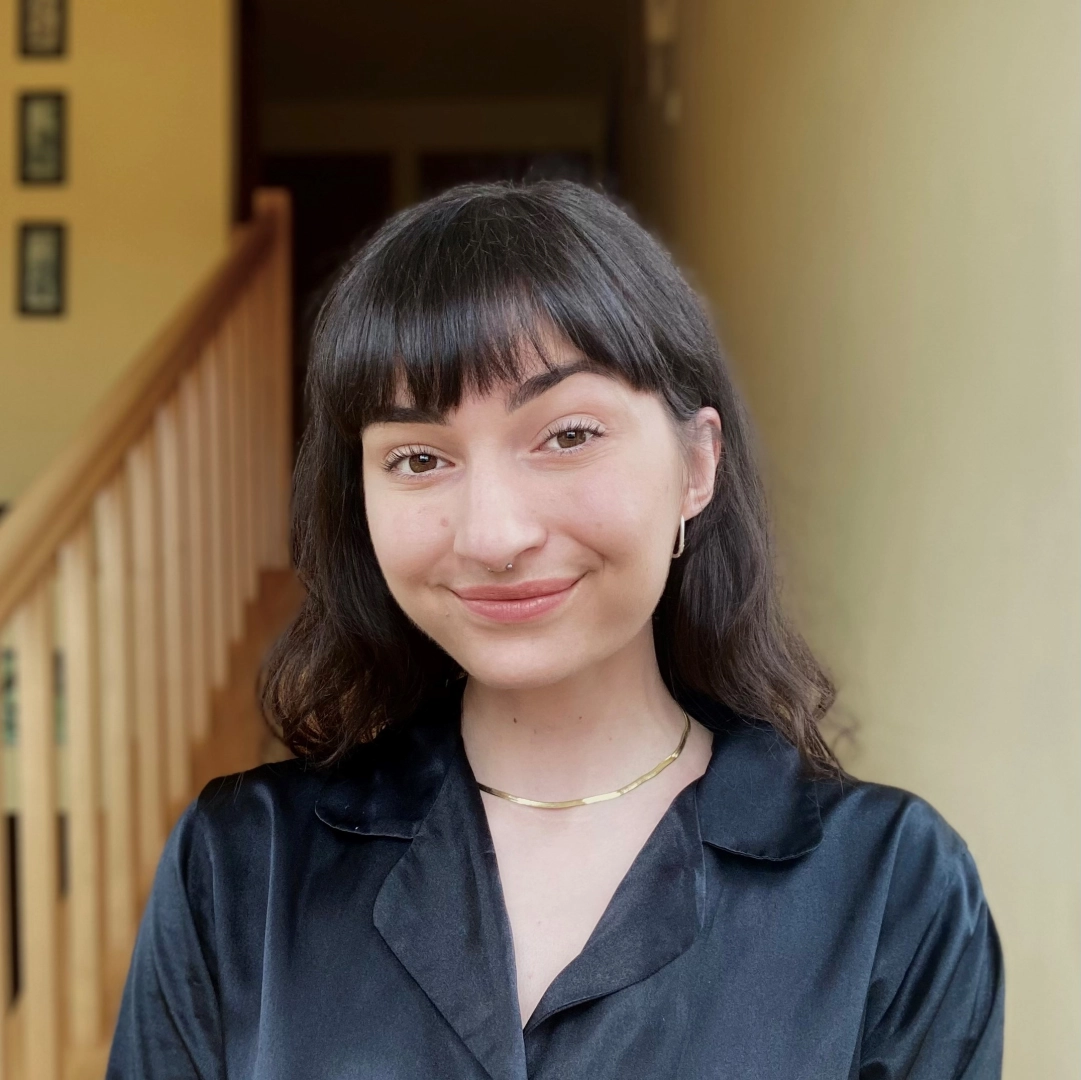Athletic disciplines permeate contemporary art, often carrying a very subtle message. Captured in artworks, they subtly lead us astray when trying to understand their function in human society and question the clarity of their conceptualization. Kata Geibl chooses shot put to highlight ecological issues, while Nabilah Nordin uses her sculpture’s title High Jump only as a guide for interpretation in which the viewers gradually lose themselves. French painter Didier Viodé's paintings of runners lead the spectator to universal existential reflections and Anne Desmet's collage reinterprets cultural symbols through subtle aesthetics.
Kata Geibl's photograph The Shot Put Before the Throw (2021) is part of the There is Nothing New Under the Sun (2021) series exploring the impact of excessive individualism on the environment. We encounter an image of a figure holding a ball ready to be thrown; however, the shot contains only a fragment of the body, which draws the viewer's eye to the details of its surface rather than a specific narrative. In the photograph, the athlete is taken out of context, yet one cannot shake the impression that his action is merely a fragment of a wider landscape of events. The shot put is thus removed from any situation, yet it is constantly present in a vague form. The texture of the athlete's skin, like the material of the ball he presses against his neck, offers the viewer a contemplation of surfaces in which they can find a certain commonality. The scene evokes human identification with other natural objects and places them within the intricate mechanisms of nature. Through subtle hints, the artist points out the human attitude towards the environment, as she mentioned for Foam magazine, giving it a space for reflection: “There are no clear answers but instead ambiguous questions. Which we have to ask sooner or later as we are not only heirs of the system but also suffer under it."

With High Jump (2022), Nabilah Nordin deconstructs the classical figure in modeling epoxy and plastic. She opens up the experimental field of the making itself but leaves it open to interpretation. The instability that the material evokes through its form harmoniously manifests in the theme of fluctuation between being static and in motion. It reveals the possibilities of their occurrence in dependence on each other. A kind of hybridity of the object that rejects its unambiguous classification under a specific situation or subject category. The playfulness of the deformed shape gives the impression of spontaneity and experimentation that we do not usually associate with sporting performances. The sensory distortion that we experience while observing movement such as the high jump is in turn produced by the artwork. The texture of the piece is rough and uneven, creating a sense of tangibility and materiality, and simultaneously a strange elusiveness and fluidity; finally, the title of the work also invokes the high jump, while the rest falls apart in the complexity of the thought processes through which we discover the sculpture.

Didier Viodé's acrylic series Run (2022) exposes sports figures in a kind of metaphysical vacuum. The artist works with the curvature of space as if he wanted to bring the artistic depiction closer to the perspective our eye takes when watching athletic performances, trying to encompass the temporal situation, remarkable for its transience and tension, that is currently unfolding. In some paintings the spectator encounters the entire figure of the runner, in others the painting captures only a part of the body, like when we cannot take in the whole figure when watching a race over the heads of other spectators. Here, however, the situation is somewhat different: the artist isolates the athlete and leaves the roar of the crowd aside. The strange vagueness of the airy void behind the athlete enters into contrast with the attention to detail, such as the brand logo on the running shorts.

The faces are not clear, and the runners’ identity is unknown. This strange ambiguity of both the running individual and the absent environment creates a strange atmosphere opening up universal existential questions. The runner does not appear to be primarily an athlete, but a human being. The brushwork is remarkable, its strokes giving the impression of casualness as if diluting the chaos.

Anne Desmet's collage Discobolos - Fragments (2019) mixes different media: pieces of Greek banknotes and various natural and artificial materials. The work is inspired by an ancient sculpture depicting a male athlete throwing the discus and bases its statement on contrast. Among the materials, we find parts that are organic, synthetic, hard, rough or soft, with different origins and meanings. The symbolism is strongly rooted in the reference to ancient Greek sculpture associated with Classics, artistic tradition, grandeur, or elevated sculptural culture. At the same time, it carries a strong connotation of the ideal of the human body; it is a timeless theme dating back to ancient Greece when beauty was inseparable from a good and virtuous life. The idea of beauty in today's world where its ideal is delivered to us through advertising, pop culture and social networks, tends to move away from virtue and towards success and wealth. The identical Discobols placed in a line also become a functional reminder of the mass production and consumption typical of contemporary capitalism.

The artist brings the symbols that Discobolos possesses to life through well-thought-out materials that achieve the expression of this skepticism towards tradition. The work references the history and legacy of Greece as a civilization that has influenced many aspects of Western culture. However, the fragments of Greek banknotes, predating the current Greek currency, the Euro, are a reminder of the economic aspect of Greece as a country facing financial crises and problems, and being far from independent and history-defining. The contrast is played out through carefully chosen materials, especially through the thematization of past and present, ideal and reality.





